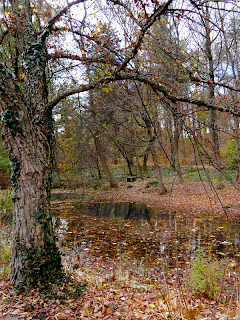I’m not at all confident that I have a handle on Laura Kasischke’s (Ka-SHISH-key) “Ativan,” but I like its emotional intensity and vivid, evocative imagery. It has the density and precision I’m always arguing for—when I’m dissatisfied with talk-y, prosy “poems”—so I’ll stick my neck out on its behalf.
Maybe the poem proposes that we
take tranquilizers like Ativan because we cannot escape our awareness of the
fact that we are doomed by mortality—just as all small, delicate beauty lives
in the shadow of a gallows tree and a hanged man’s boots. What’s your take on
the poem’s title, as wel as its overall content?
I hope everyone hears the poem, so please excuse this reminder
about meter and music: an
“anapest” is a metric foot whose three syllables are: unstressed, unstressed,
stressed, as in “to a HANGED . . .” bah bah BOOM. A few anapests in proximity are sometimes called a waltz
rhythm. If you weren’t already Strauss-ing around the room, you may now begin.
In the first stanza of “Ativan,” I’m
charmed by the musicality of the anapests at the center. It started with a
somewhat hard iamb in “That dream” (which could come across as an even harder,
stronger spondee (two consecutive stressed
syllables), and we finish the stanza with two more iambs: “-lows TREE.” But in the middle are some softer minuets, which we can hear
as the vulnerability of the cricket:
in
the DARK of
the NIGHT
at
the FOOT
of
the GAL- lows TREE.
A cricket’s noise might be
perceived as somewhat musical, and the poet brackets that little three-four
tune with a harder, sharper beat in the iambs of “That DREAM” and “the GAL-lows
TREE.”
Can we conclude that Kasische’s
rhythms reflect, and even help to create, the central conflict in the
poem: the perception of delicate
beings surrounded and threatened by our awareness of death, which we try to
soften with Ativan, among other antidotes.
Like the speaker, we’re likely to
identify with creatures like crickets. Like her, we might even call them
“virtuous” and “hopeful” and “heart-faced.” Although science tells us that crickets (and cockroaches and
other bugs) will succeed us on the planet, we see the singers as profoundly
sweet and profoundly vulnerable—or maybe doomed,
more than vulnerable.
(As a FWIW aside, in Kasischke’s
phrasing and music, I hear an echo of Keats in “Ode to a Nightingale”:
Darkling I listen; and, for many a time
I
have been half in love with easeful Death,
Call'd him soft names in many a mused rhyme,
To
take into the air my quiet breath;
Now more than ever seems it rich to die,
To
cease upon the midnight with no pain,
While thou art pouring forth thy soul abroad
In
such an ecstasy!
Still
wouldst thou sing, and I have ears in vain—
To thy high requiem become a sod.
Kasischke seems at least half in love with her subject,
nature’s most fragile creatures; but of course it’s the tiny living things she loves, not the hanged
man. Still, I’ll cling to the notion that Kasischke is half in love with crickets
and her unconscious might have heard Keats rummaging around in her attic—Wait! I can’t say that. I’m a quasi New
Critic!).
If I had a picture of a cricket,
I’d post it. Today’s photos are an attempt to capture additional “Little,
hopeful, insistent things,” whether or not their faces are heart-shaped or “lit
up by the moon,” and whether or not they knowingly sing to a “hanged man’s
boots.” I’m pretty sure the red-bellied woodpecker and the milkweed have not
taken the Ativan, yet they seem hopeful enough.
As for the big trees with
overhanging branches, let’s not talk about them, neither the autumn orange nor the
stripped bare version.



































